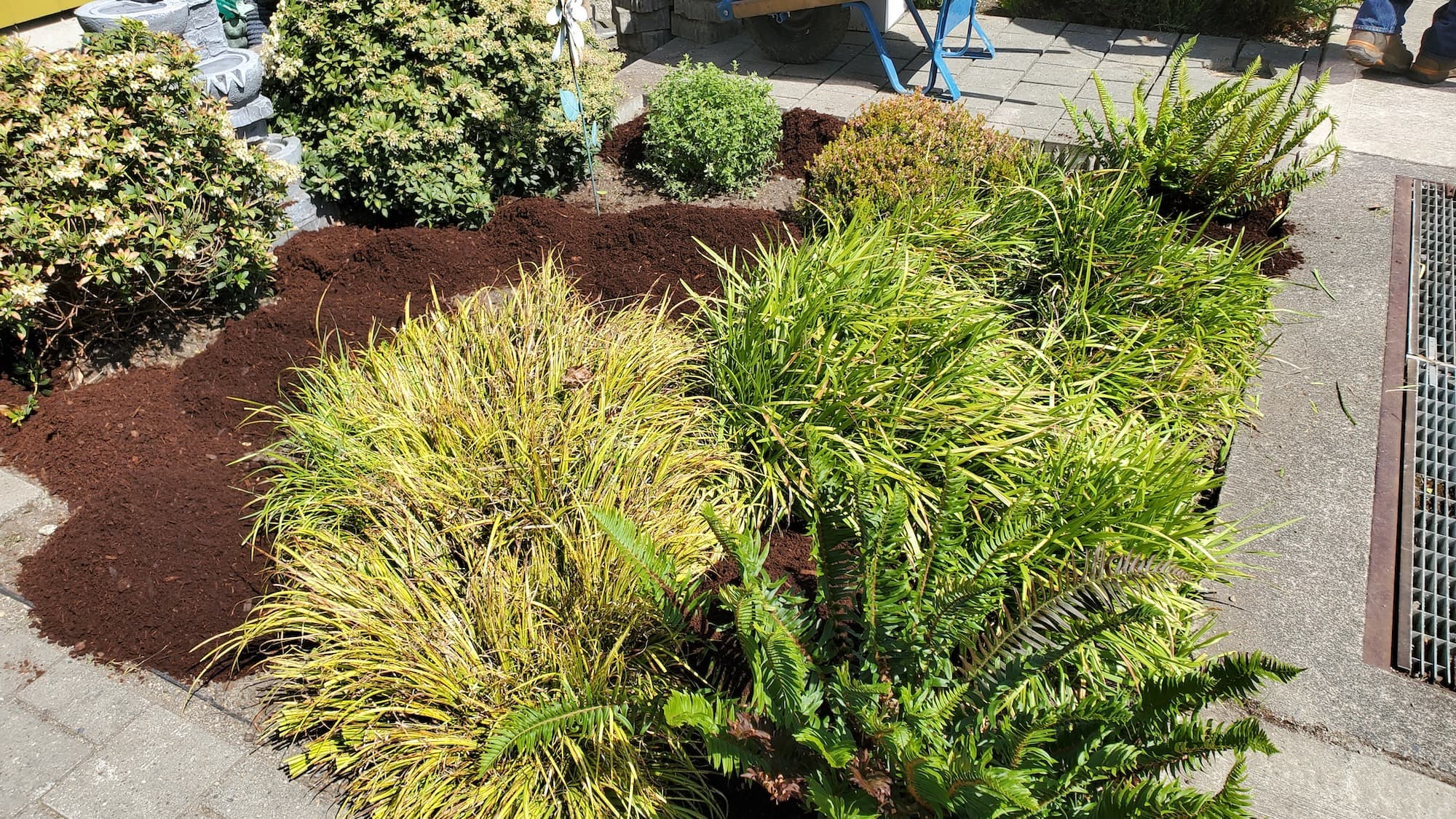West Seattle Boxwood Trimming
Homeowner’s Issue
West Seattle yards present a particular set of challenges for boxwoods. Soils here are a mix of compacted glacial till and richer loamy pockets, often shallow over hardpan, which means roots can be stressed during dry July–September stretches despite our generally wet winters. Many homes near Alki and Lincoln Park get salt spray and wind exposure; inland blocks like Admiral and High Point see heavier shade from mature evergreens, encouraging moss and ivy around the shrub bases. Heavy winter rains compact soils and produce surface runoff on sloped lots, which can wash mulch and expose roots.
Boxwoods left untrimmed in West Seattle develop dense interiors that stay damp and invite fungal problems, while shaded, poorly drained sites generate moss and slugs. HOA front yards and tight curbside beds demand tidy, uniform shapes for curb appeal; narrow sidewalks and driveways create access and sight-line issues that trimming fixes. Seasonal timing matters: we avoid hard prunes in late winter freezes and split heavy shaping across spring and late summer to reduce stress. Our work focuses on sustainable, non-chemical management — better airflow, targeted pruning, mulch, and manual weed control — tuned to West Seattle’s rain cycle and microclimates.
Our Quality Service
We trim and shape boxwoods with sharp handheld shears and loppers, using hand-pruning for structure and battery-powered hedge trimmers for finish work. Jobs typically take 1–3 hours for a standard front-yard planting, longer for hedges or multiple beds. For larger hedges or heavy restoration we schedule two visits: a primary shaping and a follow-up tune in 6–8 weeks.
Local insight: we adjust cuts for soil depth, slope, and exposure. On south-facing slopes we leave a slightly open vase shape to reduce water stress; in shaded north-facing beds we thin interiors to improve airflow. We work around Seattle water restrictions by avoiding wasteful irrigation practices and recommending mulch and soil amendments to retain moisture. All work is done without herbicides — we rely on manual removal, mulching, and organic pre-emergents where appropriate.
Benefits: safer walkways, neater sightlines, longer-lived shrubs, improved curb appeal, and lower maintenance between visits.
What’s Included
- Assessment of health, form, and site conditions.
- Structural pruning: removal of dead, crossing, and inward‑facing branches.
- Shaping to agreed profile (formal or natural).
- Hand‑rake cleanup and hauling of clippings.
- Light weeding at shrub bases (manual).
Options / upgrades:
- Mulch + fabric installation to suppress weeds and retain moisture.
- Organic weed control (manual removal, mulching, corn gluten meal where suitable).
- Soil improvement: compost top-dress or localized aeration.
- Haul-away vs. green‑bin placement (you choose).
Before & After / Expectations
- Noise & mess: trimming generates noise and clippings. Expect tidy crews and full cleanup, but some twig fragments can persist in beds until we haul or green-bin them.
- Access: we need clear 3–4 ft access lanes for tools and wheelbarrows. Parked cars or blocked gates can delay work.
- Timelines: standard jobs scheduled within 1–14 days; larger restorations booked within 2–4 weeks. Follow-up tune-ups occur in 6–8 weeks when heavy shaping is staged.
- Debris: we haul to green‑bin or dump per your choice; dump fees may apply for unusual volumes.
- Aftercare tips for West Seattle: keep fresh mulch (2–3 inches) through winter to reduce compaction; hand-pull ivy and English ivy runners in spring before they root deeply; water new root zones during dry July–September windows, early morning only.
FAQs
Q: When is best to trim boxwoods in West Seattle?
A: Light shaping anytime outside hard freezes; heavier cuts split between late spring and late summer to avoid winter stress.Q: Do you use herbicides for weed control?
A: No. We use only sustainable methods: manual removal, mulch, and approved organic options.Q: How long until the shrubs look natural after a heavy cut?
A: Expect 6–12 weeks of regrowth for noticeable filling; we often plan a secondary tune-up at 6–8 weeks.Q: Can you work on steep lots or tight curbside beds?
A: Yes. We bring low-impact tools and stage materials to minimize erosion and sidewalk obstruction.
Call to Action
West Seattle homeowners: book a quick, sustainable boxwood tune-up that respects local soil and microclimates. We offer fast scheduling, clear estimates, and practical results for yards near Alki, Lincoln Park, Admiral, and beyond. Email neatandtidyseattle@gmail.com or call/text 206-538-9344 for a free photo estimate or onsite quote. Licensed • Bonded • Insured.










